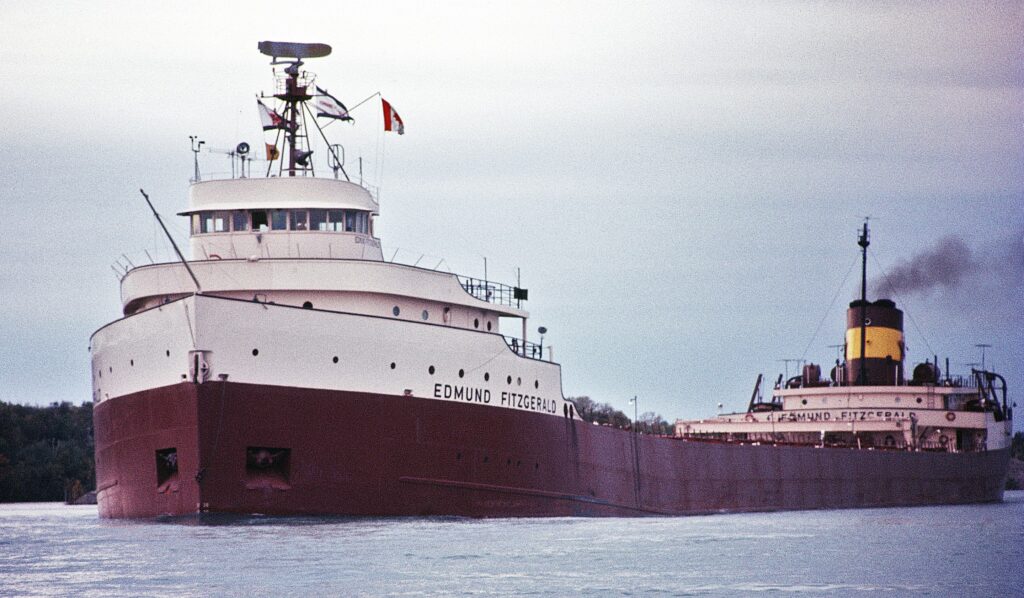
This week those of us who live near the Great Lakes are reminded of the wreck of the Edmund Fitzgerald on November 10, 1975. Lake Superior history buffs like me don’t need a reminder—”the big lake they call Gitchegumee” and “Big Fitz” are never totally off our minds. Numerous books have been published on the Fitzgerald, the 29 members of the crew who perished, and why the ship suddenly went under during a perfect storm on the big lake. Go here for a quick summary with audio and video clips. For a longer read on the Fitzgerald, you can’t do better than The Legend Lives On by Bruce Lynn and Chris Winters. The Great Lakes Shipwreck Historical Society at Whitefish Point hosts an annual memorial ceremony for the lost crewmen at 7 pm Eastern Time on November 10. For me the most moving part of the ceremony is the ringing the Fitzgerald’s bell for each of the 29 lost crewmen as their names are read aloud. Here is the information on viewing the livestream in real time this year, the 47th anniversary of the tragedy.
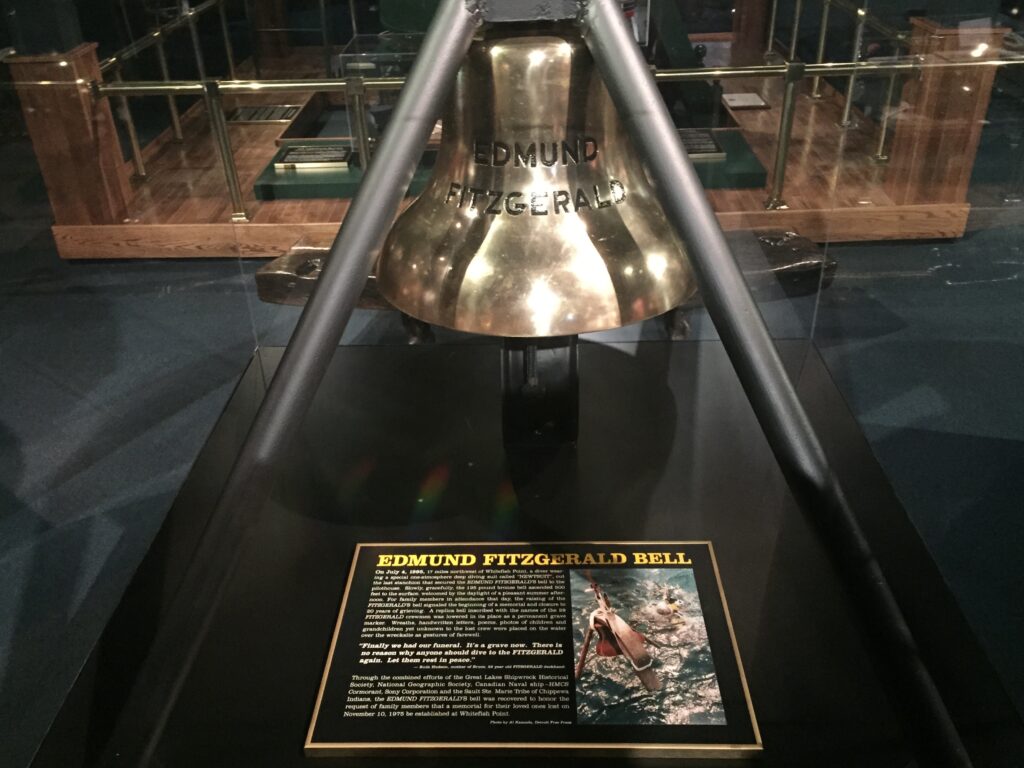
We’ve previously posted on the wreck of the Fitzgerald here, reflecting on Gordon Lightfoot‘s striking line Does anyone know where the love of God goes when the waves turn the minutes to hours? In this post we’ll look at a more obscure event in the ship’s career, the loss of an anchor in the Detroit River nearly two years before its demise. We’ll also take a brief look at the Bible’s use of nautical imagery in reference to historical storms and as a metaphor for the difficulties of life. Will your anchor hold in the storms of life?
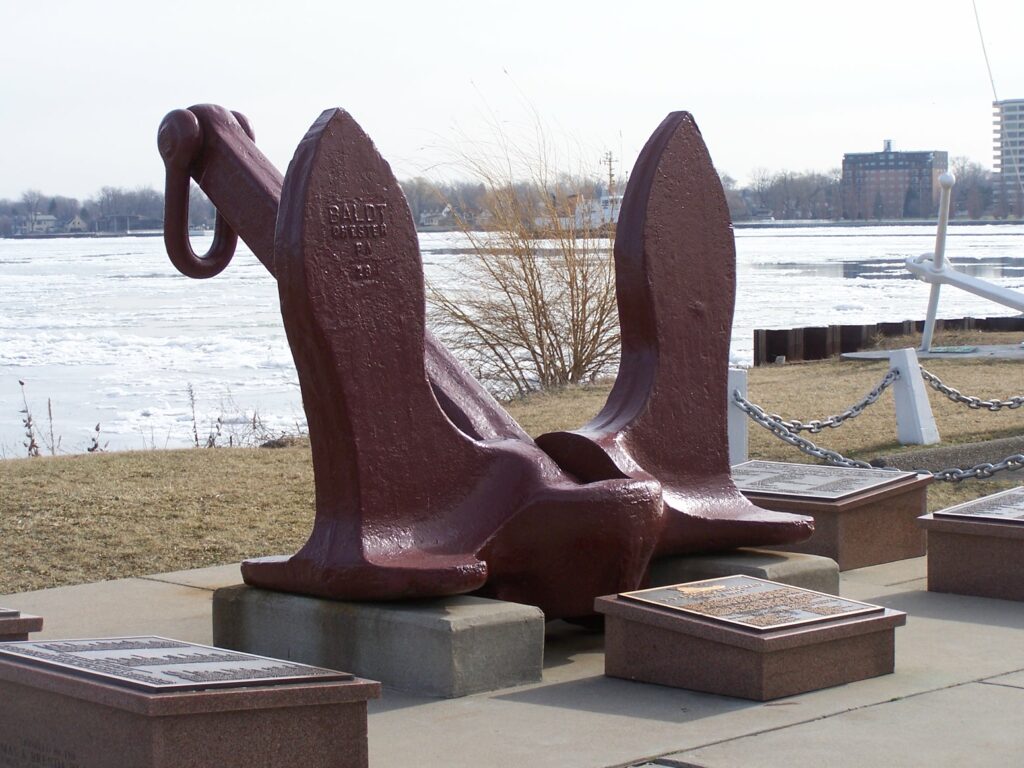
The Fitzgerald’s Anchor Lost and Found
The Fitzgerald lost her starboard bow anchor when the chain parted as the anchor was being raised on January 7, 1974. The ship was departing the Belle Isle Anchorage in the Detroit River. The anchor weighed 12,000 pounds, with flukes six feet wide. Eighteen years later, the Dossin Great Lakes Museum decided to attempt recovery. Efforts to find the anchor began on April 1, 1992. It was a difficult task due to the murky river water, but on May 20 it was finally discovered in only about 35′ of water. Plans to raise the anchor were made, along with a fundraising campaign for the museum to offset expenses. WDIV TV-5 offered to broadcast the raising live in prime time, and the anchor was finally raised about 8:45 p.m. on July 20. You can watch the video here. The anchor was taken to the museum grounds where it was viewed by thousands of people in only a few weeks. After removal of zebra mussels and restoration, the anchor was placed in the permanent display shown in the image above.
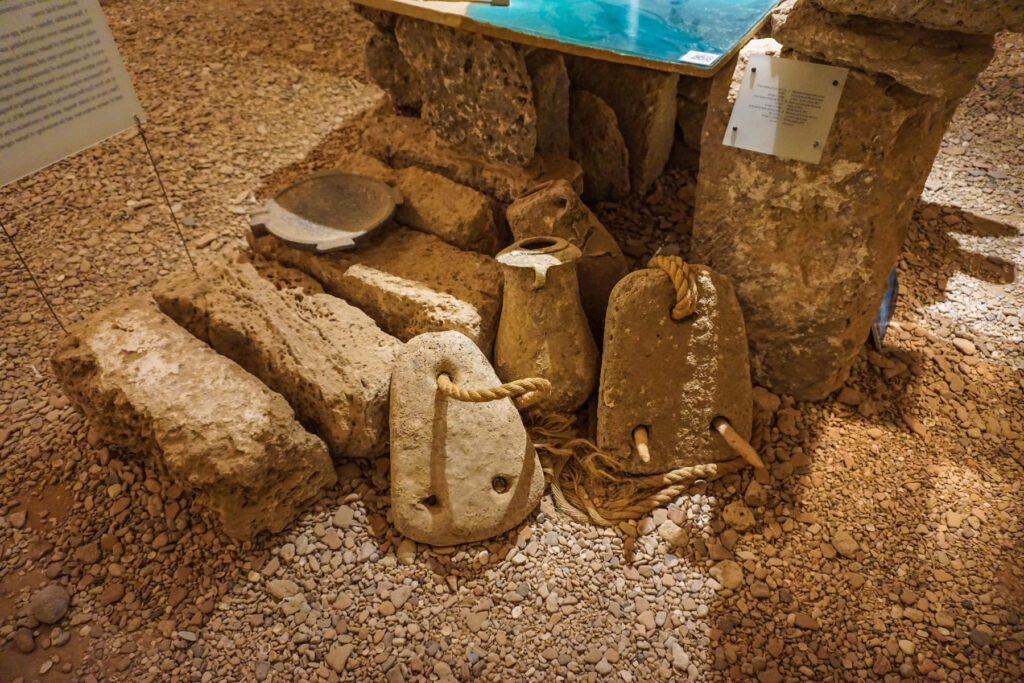
Storms and Anchors in the Bible
Nautical imagery is relatively common in the Bible. The stormy sea was feared as a place of chaos and death in ancient times. Canaanite religion venerated the god Hadad (Baal) as a god who could bring either rain and fertility or storms, destruction, and loss of life. Greeks and Romans believed that the head of the pantheon, Zeus (Jupiter), controlled wind and rain, thunder and lightning. Ancient people felt themselves to be at the mercy of these capricious gods (cf. Acts 28:3-6), and used offerings and incantations to hopefully curry their favor. But the Bible teaches that only one God can calm storms on the sea, the God who created land and sea, the God of Abraham, Isaac, Jacob, and Jesus. Psalm 107:23-32 reflects on mariners calling on God and receiving his help during the perils of a storm. When Jesus calmed the storm on the Sea of Galilee, he showed himself to be God incarnate on earth (Job 38:11; Ps 65:7; 89:9; 107:29; –> Matt 8:18-27/Mark 4:35-41/Luke 8:22-25; Compare Matt 14:22-33; John 6:16-21).
Ancient anchors have been discovered by underwater archaeologists, some in the Mediterranean, some in Lake Galilee (scroll 45 seconds into the Hebrew language video for images), and even some in the Dead Sea. Paul’s shipwreck voyage in Acts 27 probably mentions two types of anchors. The “composed anchors” shown above would have had wooden stakes attached to the bottom two holes in the chiseled stones in order to grip the sea bottom. The anchor raised in Acts 27:13 and the four anchors lowered in desperation in 27:29 were likely similar to these anchors.
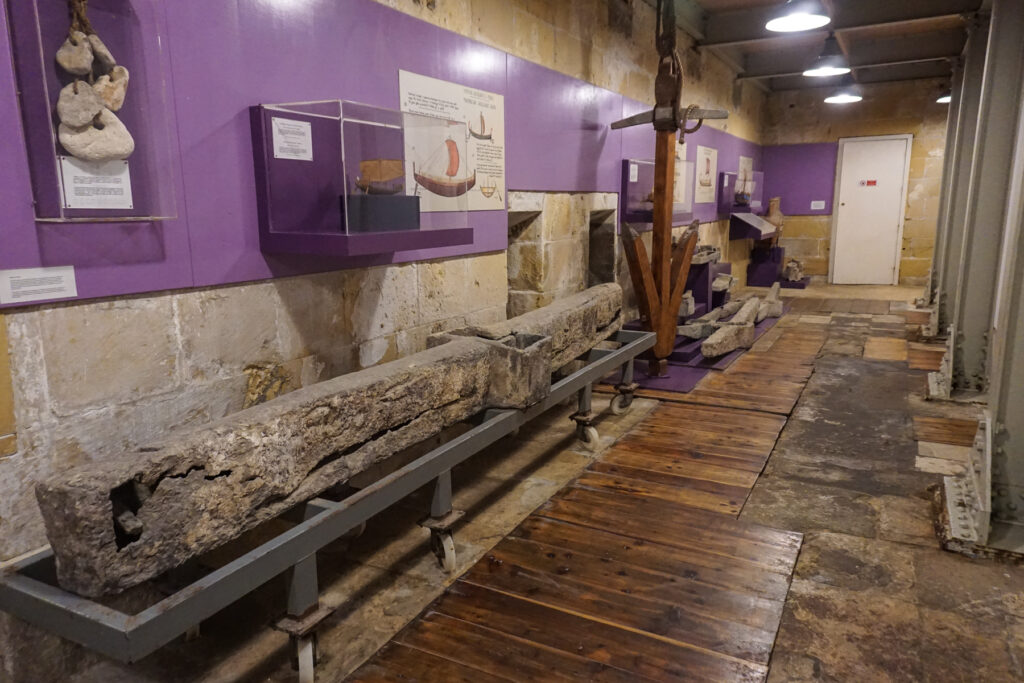
Another sort of anchor was used to slow down a ship that was being helplessly driven by a gale. Such “sea anchors” or “drift anchors” were perhaps used in Acts 27:17 (NIV, NLT). But this verse is ambiguous and may refer to other “gear” (ESV) being lowered to create drag. Sea anchors looked like modern anchors, with a long wooden shank, a perpendicular composite wood/lead stock, and pointed flukes with metal tips. The image above shows the longest anchor stock ever discovered (left foreground), over 13′ long weighing 5500 pounds. Just right of the center of the image is a smaller complete sea anchor, exhibited vertically. Apparently such anchors could be so heavy that it was impossible to raise them—they were left in the sea once the ship safely rode out the storm. This accords with Acts 27:40.
Carl Rasmussen has several informative posts at HolyLandPhotos.com on Paul’s shipwreck voyage in Acts 27, including images of several ancient anchors, including a rare one-armed anchor from the 5th century BCE discovered in 1985 as part of shipwreck about 20 miles south of Haifa, Israel.
Have you Found an Anchor for your Soul?
Will your anchor hold in the storms of life? Hymn writers of former generations when shipwrecks were more prevalent used nautical imagery to teach life lessons. Priscilla Jane Owens wrote the lyrics for the hymn “We Have an Anchor” in 1882 for her Sunday school students in a Methodist Church in Baltimore. Priscilla had the best possible precedent for her lyrics—the Bible. The unknown author of the New Testament book of Hebrews was trying to bolster his audience’s hope and confidence and they faced persecution and the temptation to turn back from following Jesus. We’ve previously posted on the message of Hebrews here. In Hebrews 6 the author warns the audience about shipwrecking their lives (6:1-8), and then tells them that he (or she!) has confidence in their successful navigation of life’s storms (6:9-12). Next comes a reminder of God’s promise and oath to Abraham, affirming that it is impossible for God to lie (6:13-20). This firm and secure anchor in Jesus is strong encouragement for those who have fled before the storm into the harbor of refuge found in the gospel.
But mightier than the violent raging of the seas,
mightier than the breakers on the shore—
the LORD above is mightier than these! (Psalm 93:4 NLT)
He who told his first disciples “let’s go to the other side” of Lake Galilee is still with his followers today. The hope of the gospel—that Jesus lived a life of faithful obedience to God, died for all of us who have fallen short of that obedience, and rose again to conquer death and the fear of the future that plagues humanity yet today—is still a sure and steadfast anchor for the soul (Heb 6:19). Someone has said “a smooth sea never made a successful mariner.” Jesus does not call us to a life of smooth sailing through tranquil seas. He calls us to follow him through the storms and experience his grace and power until we reach the other side of this earthly life.
I hope you personally experience this sure and steadfast anchor for the soul. Please comment below, whether you’d like to speak about your steadfast hope-anchor in Jesus, or whether, like the Fitzgerald, you’ve lost your anchor and need to get it back.
Here‘s an orchestral performance of “We Have an Anchor” with soloist and choir. Here‘s a simpler, more soulful version. Post your favorite anchor-song in the comments below!
• • • • • • •
Hebrews 6:9-20, NLT
Dear friends, even though we are talking this way, we really don’t believe it applies to you. We are confident that you are meant for better things, things that come with salvation. For God is not unjust. He will not forget how hard you have worked for him and how you have shown your love to him by caring for other believers, as you still do. Our great desire is that you will keep on loving others as long as life lasts, in order to make certain that what you hope for will come true. Then you will not become spiritually dull and indifferent. Instead, you will follow the example of those who are going to inherit God’s promises because of their faith and endurance.
For example, there was God’s promise to Abraham. Since there was no one greater to swear by, God took an oath in his own name, saying:
“I will certainly bless you,
and I will multiply your descendants beyond number.” (Genesis 22:16-17)
Then Abraham waited patiently, and he received what God had promised.
Now when people take an oath, they call on someone greater than themselves to hold them to it. And without any question that oath is binding. God also bound himself with an oath, so that those who received the promise could be perfectly sure that he would never change his mind. So God has given both his promise and his oath. These two things are unchangeable because it is impossible for God to lie. Therefore, we who have fled to him for refuge can have great confidence as we hold to the hope that lies before us. This hope is a strong and trustworthy anchor for our souls. It leads us through the curtain into God’s inner sanctuary. Jesus has already gone in there for us. He has become our eternal High Priest in the order of Melchizedek.
David,
An interesting post — and great pictures! I have also liked the song, “The Anchor Holds,” written by Lawrence Chewning in 1992 after he and his wife had a child die before birth. Shortly after that, Chewning’s father died. In his sorrow, Chewning wrote the song, sung now by several Christian artists. “The anchor holds/In spite of the storm.”
Doug
Thanks for the comment and the suggestion Doug.
Here’s Lawrence Chewning telling the story of his family’s year of sorrow and singing “The Anchor Holds”:
Sometimes we need an anchor in the midst of life’s storms, even though they have already created a “drag” on our lives (physically and/or emotionally). May the flukes on the anchors remind us of the arms of the cross on which Jesus died.
Amen. Our participation in the cross and the empty tomb is our anchor/hope.
The image of an anchor holding the ship steady during a storm is a vivid reminder of that no one can pluck us out of His hand. He is truly the “anchor for our souls”.